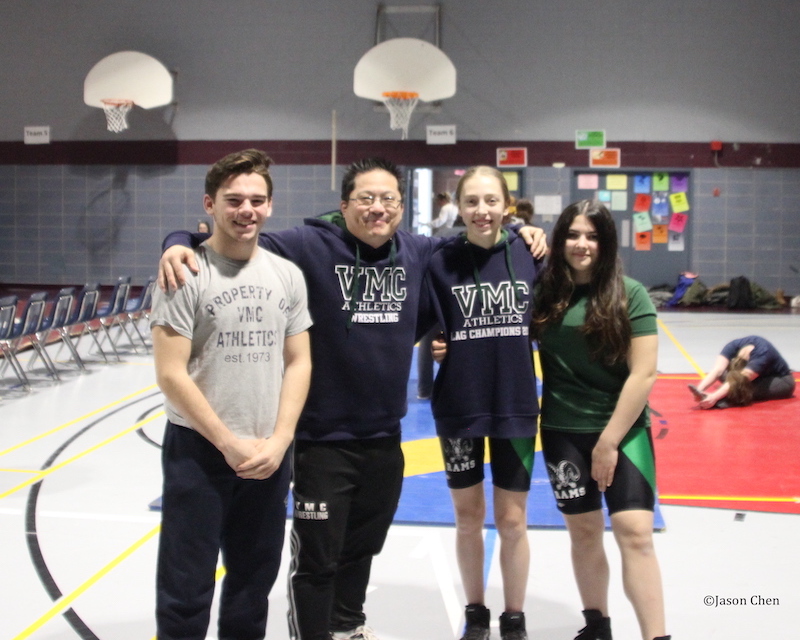Tuesday March 31st, 2020
As this quarantine persists onwards, we in the wrestling community have had a lot to think about. Lack of training as well as competitions has forced us to consider alternatives to training in order for us to keep our athletes engaged. Things such as mental training and personal exercises at home are usually the path that most of us have taken. With the limited interaction between myself and my athletes, this time to think and reflect has allowed me to look in depth at things that I’ve normally either given little thought to or have taken for granted.
As coaches, we’re faced with many difficult tasks. We’re expected to be mentors and teachers, all the while balancing performance versus participation. We face obstacles in the form of bureaucracy, adversity from some parents, as well as a diminishing pool of athletes as younger people become more and more sedentary. I’ve often said half-jokingly and with a self-deprecating tone, that the death of youth sports finally came when “that kid from the US won three million dollars in a Fortnite tournament”.
While I paint the situation as dire, it’s not as bad as that. As coaches, we can still say that while our numbers are down, coaches that have stuck with it in the province of Quebec have seen consistent, albeit weaker participation in our various programs. Simply put, while there are less programs, we at least have people wrestling in the programs that we have.
With that being said, it may seem when selecting our athletes, the only criteria we’re looking for are people with pulses! While I can’t deny that it seems that my high school team has an open-door policy, I still have standards to maintain. Sometimes, I’ve asked athletes to leave because they may be a detriment to the group and vice-versa, sometimes in the hopes of keeping my numbers up, I’ve kept an athlete that maybe I shouldn’t have.
By doing this, I let the situation fester instead of dealing with it. In this scenario, the end result has never turned out well and in every conceivable scenario, both myself and my program have paid the price. Therefore, this open-door policy isn’t as “open” as it seems.
With that being said, athlete selection is a tricky thing, particularly where younger athletes are concerned. If participation is the goal, then your selection is pretty simple; get as many people on the mat as you can. However, in wrestling, other things have to be considered even if participation is the only goal. First thing that any coach has to consider is injuries. Our sport is not a gentle one, and injuries can sometimes occur. By weeding out those athletes that may not be physically ready to wrestle at the time, we may avoid future headaches. After all, no one wants to see a kid to get injured and by carefully selecting athletes that may not make the cut, it might be beneficial in the long run.

Younger athletes with gifted older siblings can also affect our bias in athlete selection
This is not to say that we should discourage these athletes who sometimes end up on the periphery due to some physical shortcomings. After all, we’ve all heard the story of the athlete that started off slow, and then finished off strong. These are great feel-good stories and should not be overlooked. Like many coaches involved in the youth sector, I pretty much take any athlete (I don’t conduct try-outs) and make adjustments to my practice to try to maximize and involve every athlete as well as minimizing the risk of injury. It’s not always easy.
In selecting athletes that we feel are physically ready versus the ones that may not be, we bring in a bias that is inherent in all of us; the desire for strong athletes. The trick is to be able to recognize that so it doesn’t become a liability so that we put strong athletes who may not coachable, versus athletes that are less gifted, but may be in the end, more beneficial to our program.
With that being said, removing that particular bias can be easier said than done. More often than not, our biases may have come from many reasons borne out of experience. Biases may have then been further reinforced by repetition and as a result, may create a perceived reality for the coach.
What I mean by this, is that as coaches we see patterns that often repeat themselves. We can almost make an educated guess about certain athletes and their potential from pre-determined factors. Things such as where the athlete comes from, the previous school and sometimes sports that were played before starting wrestling, can paint us a pretty accurate picture of the potential athlete’s success.
This in turn can create a different type of bias which is not always a bad thing. Often, this bias may help us to avoid any potential problems in the future by not investing too much time into the athlete. The obvious negative effect of a bias is that our pre-conceived notions can have an effect on our judgement. This in turn will affect our coaching.

Athletes of all abilities contribute to a developing team, in theory, reducing bias
So, in the end this argument pretty equates to a split. While bias may have some advantages, it can inherently affect our judgment in negative ways. I think that so long as we are aware of these biases, and that in turn, learn to expect some surprises, bias in athlete selection will always exist. The trick is to make sure that regardless of what happens, that we keep an open mind considering that every situation is a new one and that the potential for change is always there.

